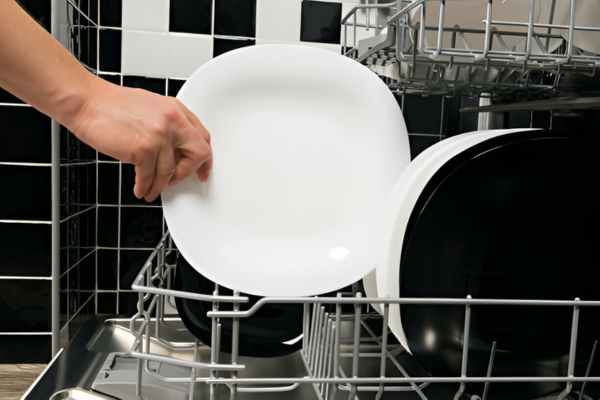Dealing with excess water in your dishwasher can be frustrating but fixable. Whether it’s a clog or a faulty part causing the issue, removing water from your dishwasher is essential to prevent further damage and restore its functionality. In this blog post, we will explore effective methods to remove water from your dishwasher and get it back in working order promptly. From checking for common blockages in the drain to inspecting the float assembly, we will guide you through step-by-step instructions on troubleshooting and fixing the problem. Understanding the potential causes of standing water in your dishwasher is key to finding the right solution. By following our practical tips and techniques, you can resolve this issue efficiently and avoid costly repairs or replacements.
Factor To Consider How To Remove Water From Dishwasher
Cause of Water Accumulation
Understanding why water remains in your dishwasher is the first step towards solving the problem. Common causes include clogs in the filter, drain hose, or garbage disposal, issues with the dishwasher’s pump, or simply an interrupted cycle. Identifying the root cause will help you select the appropriate solution.
Dishwasher Model and Age
Different dishwasher models and their age can affect the best approach to removing water. Older models might have different mechanisms and components than newer ones, which could influence how you access and clean parts like the filter or drain hose. Always refer to the manufacturer’s instructions for model-specific guidance.
Availability of Tools and Equipment
The tools you have on hand can determine which methods are feasible. For instance, using a wet/dry vacuum to clear water and debris requires owning or having access to one. Similarly, manually removing water might require a non-abrasive sponge or towels.
Safety Considerations
Safety should always be a priority. Ensure the dishwasher is turned off and unplugged before attempting any manual intervention, especially if you’re going to be working with electrical components or moving parts. Also, take care when handling the dishwasher’s internal components to avoid damage or injury.
Skill Level and Comfort
Your ability and comfort level with home maintenance tasks can significantly influence the approach you take. Some individuals might feel confident disassembling parts of their dishwasher to check for clogs or issues, while others might prefer methods that require less technical knowledge. Assess your skills realistically to avoid causing further damage to your appliance.
Here Are Some Ideas How To Remove Water From Dishwasher
Use the Drain Cycle

The drain cycle in a dishwasher is a crucial step in ensuring that your dishes come out sparkling clean. However, not many people realize that the drain cycle can also be used to remove excess water from the dishwasher itself. Instead of reaching for a towel to mop up any remaining water, simply run the drain cycle once the wash cycle is complete. This simple yet effective technique can help prevent mold and mildew buildup inside your dishwasher.
By utilizing the drain cycle in this way, you are not only keeping your dishwasher clean and odor-free but also prolonging its lifespan. Excess water left standing inside the appliance can lead to corrosion and other damage over time.
Manually Bail Out Water

Manually bailing out water from a dishwasher can be a daunting task, especially when you are faced with unexpected flooding. One effective technique is to use a large sponge or towels to soak up as much water as possible. Squeezing out the excess liquid into a bucket can help prevent further leakage and damage.
Another method involves using a wet/dry vacuum to suction out the water efficiently. The powerful suction capabilities of these vacuums make it easier to remove large amounts of water quickly. Remember to empty the vacuum regularly to prevent overflow and ensure continuous operation.
Check and Clean the Filter

Checking and cleaning the filter is a crucial maintenance task for ensuring your dishwasher functions efficiently. Over time, food debris and residue can build up in the filter, leading to clogs and poor performance. By regularly removing and cleaning the filter, you can prevent these issues and extend the lifespan of your dishwasher.
To effectively clean the filter, start by locating it at the bottom of the dishwasher. Remove any visible debris or particles trapped in the filter by gently rinsing it under running water. For a deeper clean, soak the filter in warm soapy water to dissolve stubborn grime. Remember to dry the filter completely before reinstalling it to avoid mold growth inside your dishwasher.
Inspect and Clean the Drain Hose

Inspecting and cleaning the drain hose of your dishwasher is a crucial task that often gets overlooked. Over time, debris and food particles can accumulate in the hose, leading to clogs and inefficient drainage. To remove water from the dishwasher effectively, start by locating the drain hose at the back of the machine. Disconnect it carefully and inspect for any blockages or kinks that may impede proper water flow.
A simple yet effective method to clean the drain hose is by using a combination of hot water and vinegar solution. Fill a bucket with this mixture and submerge the hose in it for an hour to loosen up stubborn debris. Then, use a long brush or pipe cleaner to gently scrub inside the hose to dislodge any remaining build-up. After thoroughly cleaning, reattach the drain hose securely to ensure smooth drainage during each washing cycle.
Use a Plunger

Using a plunger is not just for unclogging toilets – it can also be a handy tool for removing excess water from your dishwasher. If you find yourself with standing water in the bottom of your dishwasher, grab a plunger and give it a try. Simply place the plunger over the drain opening in the dishwasher and give it several firm plunges to create suction. This will help to dislodge any clogs or blockages that may be causing the water backup.
Utilize a Wet/Dry Vacuum
A wet dry vacuum is a versatile tool that can be incredibly useful when it comes to removing water from a dishwasher. Instead of struggling with towels or using a traditional vacuum that could get damaged by water, a wet dry vacuum offers a efficient solution. Simply attach the appropriate hose for liquid spills and watch as the vacuum quickly sucks up the excess water, saving you time and effort.
Clear the Air Gap
Clearing the air gap in your dishwasher is a crucial step in ensuring proper drainage and preventing water backup. One effective way to remove water from the dishwasher is to carefully detach the air gap cap and inspect for any blockages. Use a small brush or cloth to clean out any debris that may be causing obstruction, allowing water to flow freely. Additionally, running hot water through the air gap can help dislodge any remaining residue and ensure optimal performance.
Check the Garbage Disposal
Checking the garbage disposal is a crucial step in maintaining a clean and efficient kitchen. If you notice any unusual noises or clogs, it’s important to address them promptly to prevent more significant issues. A simple way to ensure your garbage disposal is working effectively is by running cold water regularly while using it, which helps break down waste materials. Additionally, checking for any visible blockages or foreign objects can help prevent costly repairs in the future.
Adjust the Dishwasher’s Position
Adjusting the position of your dishwasher may seem like a simple task, but it can have a significant impact on its performance. One common issue that can arise from improper positioning is water not draining properly after a cycle. By ensuring that the dishwasher is level and securely in place, you can prevent this problem and avoid the hassle of having to remove excess water manually.
Another aspect to consider when adjusting the dishwasher’s position is its proximity to other appliances or cabinets. Make sure there is enough space for proper ventilation and easy access for maintenance tasks such as removing debris from filters or unclogging drainage hoses.
How do you drain water from dishwasher?
To drain water from a dishwasher, you can start by checking if there is any visible debris or blockage in the drainage system. Make sure the dishwasher is turned off and disconnected from power before attempting to remove any parts. Next, locate the drainage hose at the back of the dishwasher and disconnect it from the sink or garbage disposal. Place a bucket underneath to catch any excess water that may come out. You can then use a wet-dry vacuum to suction out any remaining water from the dishwasher.
How do I unblock water in my dishwasher?
To unblock water in your dishwasher, start by checking the drain filter and removing any debris or food particles that may be causing the blockage. Next, inspect the drain hose for any kinks or clogs and ensure it is properly connected to the sink drain or garbage disposal. You can also try running a cycle with a dishwasher cleaner to help break down any built-up grease or soap scum that could be blocking the water flow.
The Final Thought
Removing water from a dishwasher is a simple process that can help prevent mold and mildew growth as well as maintain the efficiency of the appliance. By following the steps outlined in this article, you can effectively remove excess water and ensure your dishwasher continues to function properly. Regular maintenance and cleaning of the dishwasher will help prolong its lifespan and save you from costly repairs in the future. Remember to always consult the manufacturer’s guidelines for specific instructions on how to remove water from your particular model of dishwasher.
